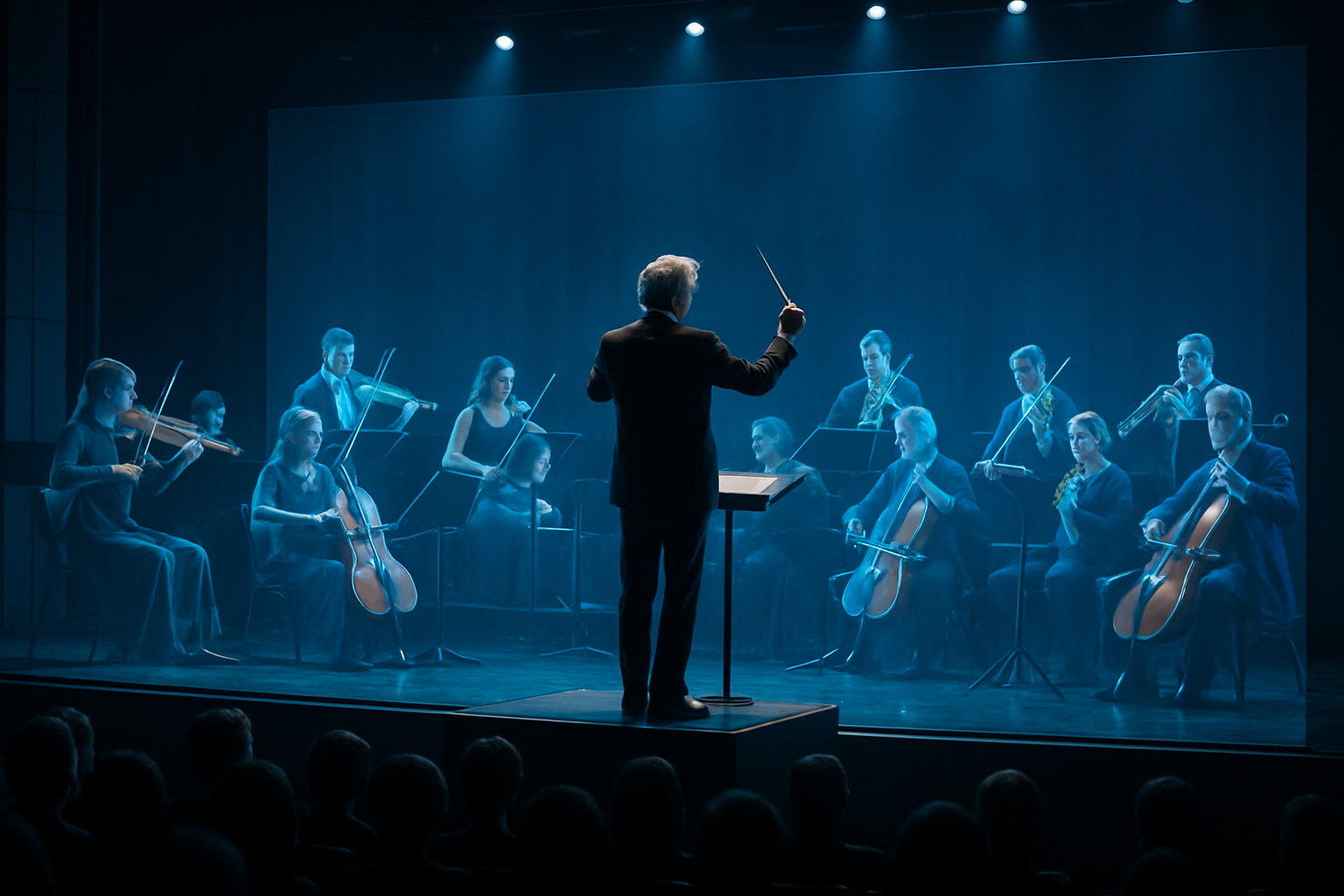The Sonic Canvas: Reimagining Orchestra Pits in Modern Opera
In the world of opera, a quiet revolution is taking place beneath the stage. The traditional orchestra pit, long a staple of operatic performances, is undergoing a transformation that's reshaping the auditory landscape of this centuries-old art form. This evolution is not just about acoustics; it's a reimagining of the relationship between musicians, performers, and audiences, challenging long-held conventions and opening up new possibilities for artistic expression.

A New Sonic Frontier
In recent years, innovative opera companies and avant-garde directors have begun to question the necessity of the traditional pit. Some productions have experimented with moving the orchestra onto the stage, creating a visual spectacle that integrates musicians into the dramatic action. Others have explored the use of elevated platforms or even suspended orchestras, challenging the very notion of what an opera performance should look like and sound like.
Technology’s Role in Reimagining Space
Advancements in sound technology have played a crucial role in this reimagining of the orchestra pit. Sophisticated audio systems now allow for the precise control and distribution of sound throughout the performance space. This has enabled some opera houses to experiment with unconventional orchestra placements without sacrificing acoustic quality. In some cases, digital sound design has even allowed for the creation of virtual orchestras, pushing the boundaries of what’s possible in live performance.
The Audience Experience Transformed
These changes in orchestra pit design and placement have a profound impact on the audience experience. When musicians are visible, it adds a new dimension to the performance, allowing viewers to appreciate the physical artistry of instrumental playing alongside the vocal prowess on stage. Some productions have even incorporated audience seating within the orchestra, creating an immersive experience that blurs the lines between performer and spectator.
Challenges and Controversies
Not everyone in the opera world has embraced these changes. Traditionalists argue that moving the orchestra out of the pit disrupts the delicate balance of sound that has been perfected over centuries. There are also practical concerns, such as the potential for visual distractions and the logistical challenges of fitting large ensembles onto already crowded stages. Some performers have expressed discomfort with the increased exposure, preferring the anonymity of the traditional pit.
A Dialogue Between Tradition and Innovation
The reimagining of the orchestra pit represents a broader conversation within the opera community about the balance between tradition and innovation. While some see these experiments as a necessary evolution to keep opera relevant in the 21st century, others fear that they risk losing the essence of what makes the art form unique. This ongoing dialogue is shaping the future of opera, influencing everything from venue design to composition techniques.
The Global Perspective
This trend is not limited to any one country or opera tradition. From the grand stages of European opera houses to experimental productions in North America and groundbreaking works in Asia, the reconfiguration of the orchestra pit is a global phenomenon. Each culture brings its own perspective to this evolution, resulting in a rich tapestry of approaches that reflect both local traditions and universal themes.
Looking to the Future
As opera continues to evolve, the role of the orchestra pit will likely remain a topic of exploration and debate. Some envision a future where flexible performance spaces allow for multiple configurations, adapting to the needs of each production. Others speculate about the integration of virtual and augmented reality technologies, creating hybrid experiences that push the boundaries of what’s possible in live performance.
The Essence of Opera Unchanged
Despite these changes, the fundamental essence of opera remains unchanged. It continues to be a powerful fusion of music, drama, and visual art, capable of stirring deep emotions and exploring the human condition. The reimagining of the orchestra pit is not about replacing tradition, but about expanding the palette of tools available to creators and performers. As opera houses around the world experiment with new approaches, they are writing the next chapter in the rich history of this enduring art form.





